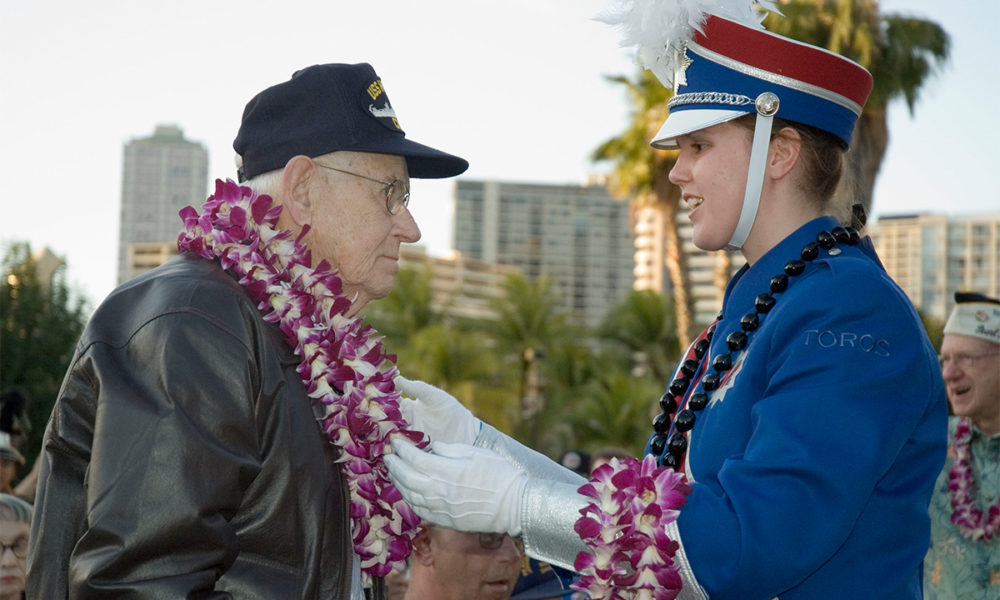On Dec. 7, 1941, America was attacked at Pearl Harbor in Honolulu, Hawaii. President Roosevelt called it “a date which will live in infamy.”
On Dec. 7, 2016, the Pearl Harbor Memorial Parade brought together bands from around the nation to “pay tribute to those whose service and sacrifice preserved the freedom of a grateful nation,” says Joel Biggs, chairman of the parade.
Twenty bands including military and high school ensembles participated in this year’s event, which commemorated the 75th anniversary of the attacks. High school groups were selected based on a combination of recommendations from music educators throughout the nation and also from an application process.
In addition to marching in the parade, students met with Pearl Harbor survivors and World War II veterans. “In a very real sense, it brings textbooks to life,” Biggs says. “They’re literally stepping out of the classroom into history because they have the opportunity to learn from those who made history.”
Meeting with veterans provided students with the “understanding that their issues are really not as grave as those of the people who fought there that day,” says Kevin Sady, director of bands for Galena High School in Reno, Nevada.
The event began with a ceremony at Fort DeRussy Beach Park, including an appearance by the parade’s Grand Marshall Gary Sinise, who founded the Gary Sinise Foundation in 2011 to honor military personnel, veterans, and first responders and who is most well known as Lieutenant Dan from the movie “Forrest Gump.” Following a combined performance by all 20 bands, the groups broke off into their respective parade blocks for an evening parade down Kalakaua Avenue in Waikiki.
Bands represented states for each of the sunken U.S. battleships. For instance, Valhalla High School Band from El Cajon, California, marched for the U.S.S. California while the Shadow Mountain High School Band from Phoenix represented the U.S.S. Arizona.
Because of Hawaii’s unique geographic location, the annual parade attracts an international crowd, including many people from Japan. To Biggs, this diverse audience is a telling sign of the way the world has changed in the 75 years since the attack on Pearl Harbor. “There’s an important reconciliation component in this parade as well,” he says. “Not only do we commemorate the past, but we also celebrate the future by recognizing that once bitter enemies can become allies.”—EM


